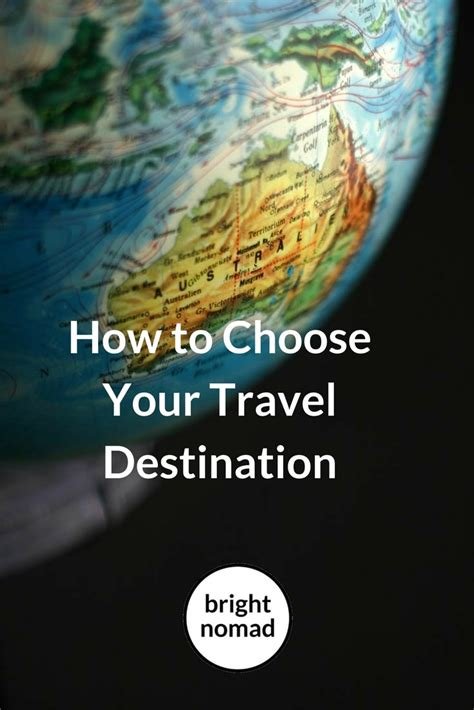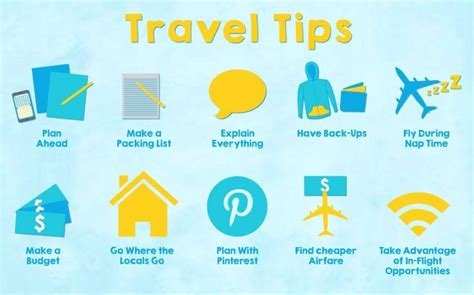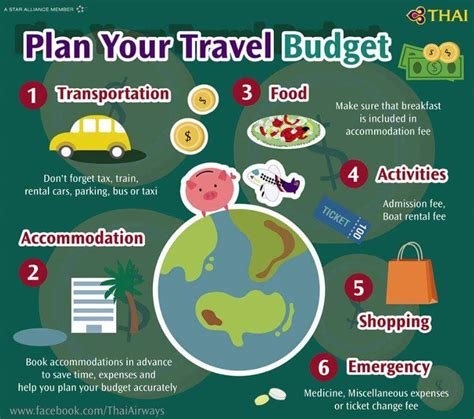Choosing the right destination is crucial for a fulfilling travel experience. In the blog post How to Choose the Right Destination for Every Type of Traveler, readers are guided through essential factors to consider, such as understanding traveler preferences and interests, evaluating budget constraints, and identifying various travel styles. The article examines popular destination categories and emphasizes the importance of cultural aspects in decision-making. It also provides tips for families seeking child-friendly locations and analyzes environmental factors that may influence destination choice. By summarizing key insights and offering next steps, the article aims to help travelers tailor their experiences to fit their unique needs. Ultimately, this comprehensive guide serves as a valuable resource for anyone looking to enhance their travel planning skills, ensuring they choose the perfect destination for every adventure.
Understanding The Importance Of Destination Selection
Choosing the right travel destination is crucial, as it sets the tone for the entire experience. Every traveler has unique preferences, and understanding these nuances can significantly enhance the joy of exploring new places. How to effectively select a destination involves considering various factors that align with the traveler’s interests, budget, and lifestyle. By taking the time to analyze destination options, travelers can avoid unnecessary stress and ensure a fulfilling journey.
To ensure a positive travel experience, it’s essential first to evaluate what type of adventure you seek. Is it relaxation on a beach, an action-packed city escape, or an immersive cultural expedition? Each of these categories demands careful consideration of the destination. Moreover, the traveler should assess their personal motivations, whether they prefer exciting landscapes or historical sites. Documenting these insights can serve as a guide throughout the selection process.
Key Factors To Consider
- Personal interests and hobbies
- Travel companions and group dynamics
- Overall budget constraints
- Preferred travel style (luxury, backpacking, etc.)
- Accessibility and transportation options
- Climate and seasonal factors
- Safety and local regulations
Additionally, understanding the cultural and environmental context of the destination can greatly affect the overall experience. Travelers should research local customs, climate, and current events to ensure they choose a location that aligns with their values and expectations. It’s not solely about what one wants to see but also how the local atmosphere can complement or enhance the travel experience. The right balance often leads to unforgettable memories and stories to share long after the trip has ended.
How To Assess Traveler Preferences And Interests
Understanding how to assess traveler preferences and interests is vital for ensuring a successful travel experience. By identifying what travelers enjoy, you can tailor the destination selection to match their expectations and desires. Knowing their preferences not only enhances their travel experience but also contributes to a seamless planning process that minimizes stress and maximizes enjoyment.
To effectively determine the interests and preferences of travelers, it is essential to gather insights that reflect their priorities. This can be achieved through various means, such as surveys, interviews, or even casual conversations. Making an effort to consider what excites or relaxes them can lead to more informed choices when selecting destinations.
Remember: The goal is to align the travel experience with the values and desires of the individual traveler, ensuring a memorable journey.
Here are the Steps To Identify Preferences that can guide you in understanding what potential travelers are looking for:
- Conduct a brief questionnaire to gather insights on interests.
- Engage in conversation to explore recent travel experiences.
- Analyze social media patterns to identify their travel inspirations.
- Discuss lifestyle preferences, such as adventure vs. relaxation.
- Consider any travel restrictions or requirements they may have.
- Inquire about favorite activities or hobbies that could influence a trip.
- Keep an open mind and be willing to adapt based on their feedback.
By implementing these steps, the travel planning process can be significantly enhanced, leading to arrangements that truly resonate with each traveler’s unique preferences. Facilitating this level of understanding will not only improve satisfaction levels but also promote repeat travel opportunities in the future.
Examining Popular Destination Categories
When exploring how to choose the right destination for your travels, it is essential to delve into different destination categories. Each type caters to various interests, ensuring every traveler finds their perfect match. Whether you are an adventure seeker, a history buff, or a relaxation enthusiast, understanding the key categories will help you make informed decisions.
To effectively narrow down your choices, consider your vacation goals and passions. This can be achieved by categorizing your potential destinations. Engaging with like-minded travel enthusiasts and doing in-depth research can further illuminate the options available to you. Being aware of the distinct characteristics of different destination types will also aid in streamlining your selection process.
- Adventure Travel
- Cultural Experiences
- Relaxation and Wellness Retreats
- Family-Friendly Destinations
- Historical and Heritage Sites
- Eco-Tourism Spots
- Culinary Journeys
Ultimately, the key to making the right choice lies in balancing your interests with the experiences offered by each destination. You might find that a location can provide multiple advantages across various categories. In addition, consider aspects such as local culture and climate, as these can greatly influence the overall travel experience. Remember, a well-chosen destination sets the foundation for unforgettable journeys and valuable memories.
Evaluating Destinations Based On Budget Constraints
When planning a trip, understanding how to evaluate destinations based on budget constraints is crucial to ensure a pleasant travel experience. Travelers must recognize that their financial situation will greatly influence their choices, from transportation and accommodation to activities and dining. Therefore, it is essential to align travel aspirations with available resources to maximize enjoyment without overspending.
To effectively navigate the complexities of travel budgeting, focus on key financial considerations. Assess your total travel budget, which will help you decide whether to pursue a luxurious getaway or a more economical option. An insightful approach is to create a list of potential destinations that fit within your financial limits. This will streamline your decision-making process while also ensuring that you don’t overlook hidden gems that align with your interests and financial capabilities.
Budget Considerations
- Determine your overall travel budget.
- Research average costs of accommodations, meals, and activities.
- Identify destinations that are known for being budget-friendly.
- Consider the time of year you plan to travel for potential savings.
- Evaluate local transportation options and their costs.
- Look for free or low-cost attractions in potential destinations.
- Factor in currency exchange rates if traveling internationally.
By outlining these budget considerations, you can create a more informed travel plan. Additionally, be mindful of any unforeseen expenses that may arise during your trip. Prioritizing essential expenses while allowing room for spontaneous experiences can lead to a fulfilling journey, regardless of whether you choose a high-end destination or a more budget-conscious locale. Ultimately, traveling well involves making educated choices that harmonize your dreams with your financial reality.
Identifying Travel Styles For Tailored Experiences
When embarking on a journey, understanding different travel styles can significantly enhance the overall experience. By recognizing what type of traveler you are, you can tailor your destination choices to match your preferences and interests. This approach not only ensures that the travel experience is enjoyable but also aligns with your expectations, making your trip unforgettable.
How to identify your travel style involves reflecting on how you prefer to explore new places. Are you someone who thrives on adventure or do you enjoy a more relaxed pace? It’s essential to consider your tendencies, as this will direct your pursuit of the perfect destination. Engaging in activities that resonate with your personality will guarantee a more fulfilling experience.
- Cultural Explorer
- Adventure Seeker
- Luxury Traveler
- Nature Lover
- Family Vacationer
- Spiritual Pilgrim
- Budget Backpacker
Once you grasp your travel style, planning becomes easier. For instance, cultural explorers may seek out destinations rich in history and art, while adventure seekers look for locations that offer outdoor activities such as hiking, diving, or climbing. It’s also crucial to remember that some travelers might have hybrid styles, where they blend elements from various travel styles to craft their ideal itinerary.
“Travel is the only thing you buy that makes you richer.”
Acknowledging travel styles plays a critical role in enhancing your overall experience. It allows for greater enjoyment as you embark on journeys that mirror your interests, leading to a more engaged and memorable adventure. Spend time considering your style, and you’ll be able to craft an itinerary that reflects what truly excites you about exploring the world.
Understanding Cultural Aspects Of Destination Picks
When it comes to selecting a travel destination, it is crucial to take into account the cultural aspects that can significantly enhance the experience. Understanding the local customs, traditions, and social norms of a destination can lead to a more immersive and fulfilling travel experience. This is particularly important for travelers who wish to engage deeply with their surroundings rather than simply observing from the sidelines. By recognizing cultural differences, travelers can foster meaningful connections and gain a richer understanding of the world around them.
Before finalizing your travel plans, consider the following Cultural Considerations to better align your destination choice with your personal interests and values:
- Local customs and traditions
- Language barriers and communication styles
- Dining etiquette and food preferences
- Cultural dress codes
- Historical background and significance
- Art and music scenes
- Religious beliefs and practices
These considerations not only enhance personal experiences but also promote respect and understanding between travelers and host communities. For travelers seeking to broaden their horizons, delving into cultural aspects can lead to unforgettable encounters and shared experiences, ultimately enriching their perspective on life.
Embracing the cultural nuances of a destination not only elevates your travel experience but also fosters positive interactions with locals, creating a more inclusive and respectful travel environment.
As you evaluate potential destinations, always keep in mind how the unique cultural aspects of each location can align with your personal travel preferences. By doing so, you are not only choosing a destination that resonates with your desires but also ensuring that your journey contributes positively to the places you visit. In this way, cultural understanding becomes an essential component of responsible and rewarding travel.
Tips For Choosing Family-Friendly Travel Spots
When planning a family getaway, selecting a destination that caters to everyone’s needs can be quite a challenge. It is essential to understand what your family finds enjoyable to ensure a memorable experience. Each family member may have different preferences, so you need to choose a destination that balances these varied interests while keeping the little travelers entertained. Utilize the how to approach to identify suitable options that make family travel delightful.
One of the first steps in selecting a family-friendly travel spot is to consider the age and interests of your children. Different age groups will require different types of activities to stay engaged. Additionally, ensure the destination offers amenities like kid-friendly dining, safe accommodations, and appropriate local attractions. This careful consideration will contribute to a smoother travel experience for everyone involved.
- Family Considerations
- Age of children
- Interests and hobbies
- Safety and security
- Accessibility and transportation options
- Available activities and attractions
- Dining options suitable for families
- Emergency services and medical facilities
Furthermore, it’s crucial to involve your family members in the decision-making process. Share potential destinations with them, and encourage discussions about what excites them most about each place. This inclusion not only fosters anticipation but also ensures that everyone feels valued in the planning stages. Understanding why a certain location might appeal to your family is a vital part of the overall experience and planning.
To create lasting memories, it’s beneficial to choose a destination where families can bond over shared experiences, whether it’s through adventure, relaxation, or cultural exploration.
Lastly, don’t forget to review reviews and testimonials from other families who have visited your shortlisted destinations. This feedback can provide insights into what to expect and help you avoid unexpected inconveniences. By focusing on these key factors, you can effectively find a family-friendly travel spot that offers joy, excitement, and unforgettable experiences for all ages.
Analyzing Environmental Factors In Destination Choice
When selecting a travel destination, understanding environmental factors plays a crucial role. These factors can significantly influence not only the convenience of the trip but also the overall experience. Travelers must consider elements such as climate, seasonal variations, and local ecosystems to ensure they choose a destination that meets their expectations for comfort and enjoyment. Furthermore, environmental aspects can impact safety and health considerations, making them key components of destination selection.
One important point to remember is that different travelers will have varying priorities regarding environmental factors. For some, a tropical paradise with warm temperatures year-round is ideal, while others may prefer the cooler climate of mountainous regions. Since diverse preferences exist, it is essential to evaluate what environmental variables matter most to you personally, as these will guide your choice of destination.
Strengthening your travel decision-making can be achieved by exploring multiple environmental elements. In this regard, the following Environment and Weather Considerations should be taken into account:
- Local climate patterns and average temperatures during your travel season.
- Potential for natural disasters or extreme weather events.
- Air quality and pollution levels in the destination.
- Availability of outdoor activities aligned with the natural environment.
- Accessibility of natural attractions, national parks, or wildlife reserves.
- Local flora and fauna that may impact your travel experience.
- Weather fluctuations that may affect your itinerary.
By considering these factors, travelers can make informed choices about where to go based on how well the environmental setting suits their needs and preferences. Ultimately, the selected destination should not only offer the desired activities and experiences but also promote safety and enjoyment through a favorable environmental context. Understanding these elements will heighten the traveler’s anticipation and satisfaction, ensuring a memorable journey that aligns perfectly with their travel style.
Summarizing Key Insights On Destination Selection
In summarizing key insights on how to choose the right destination for various types of travelers, it’s crucial to consider several factors that intersect with individual preferences and budget constraints. For each traveler type, understanding their unique travel style, interests, and needs can greatly influence the decision-making process. This personalization enhances their overall experience and ensures memorable journeys.
When examining popular destination categories, it’s essential to identify the core attributes that appeal to different travelers. For adventure seekers, destinations that offer thrilling activities such as mountain climbing or scuba diving might be ideal. Conversely, cultural enthusiasts may prefer locations rich in history and heritage. Knowing the nuances between these preferences aids significantly in pinning down the key insights for effective destination selection.
- Understand the traveler’s interests and style.
- Evaluate seasonal trends and weather conditions.
- Consider budget constraints for destination feasibility.
- Assess local culture and attractions.
- Identify family-friendly features for group travelers.
- Look into environmental sustainability practices.
- Use travel forums or reviews for destination feedback.
Ultimately, destination selection is a strategic process that benefits from careful analysis and consideration. It should align with personal, family, or group travel goals. By embracing flexibility and being attentive to the traveler’s unique needs, you can create bespoke travel experiences that leave lasting impressions. Ensuring a thorough evaluation of these crucial factors before making a final decision can enhance both satisfaction and enjoyment during the trip.
Next Steps For The Perfect Travel Experience
Once you’ve narrowed down your options based on your travel preferences and interests, the how to finalize your destination is the next critical step. This phase is where you meld all your research and insights to select the destination that will best cater to your travel needs. It’s essential to consider various factors to ensure your chosen destination aligns well with your expectations and aspirations.
Moreover, assessing the suitability of your potential destinations will help eliminate any choices that may not fit your travel style or budget constraints. This meticulous approach will also prepare you for unexpected situations and enhance your overall travel experience. By understanding not only your preferences but also the characteristics of the destination, you will make informed decisions that lead to unforgettable adventures.
“A well-planned trip allows you to focus on enjoying your experience rather than stressing over logistics.”
Steps To Finalize Your Destination Choice
- Identify your primary travel goals, whether relaxation, adventure, or cultural exploration.
- Check travel advisories or safety concerns for the destinations you’re considering.
- Research the climate and seasonality to ensure favorable weather conditions for your trip.
- Evaluate accommodation options and their proximity to major attractions.
- Consider activities available at each destination to match your interests.
- Estimate the total cost, including flights, food, and local transportation.
- Gather reviews or feedback from fellow travelers to gain insight into your chosen destinations.
With your list in front of you, concluding the selection process becomes much simpler. Each step should prompt further reflection on your priorities for this journey. As you weigh each consideration, think about how much each destination resonates with you and the type of traveler you are, allowing your final choice to reflect not only practicality but also your personal travel aspirations.









